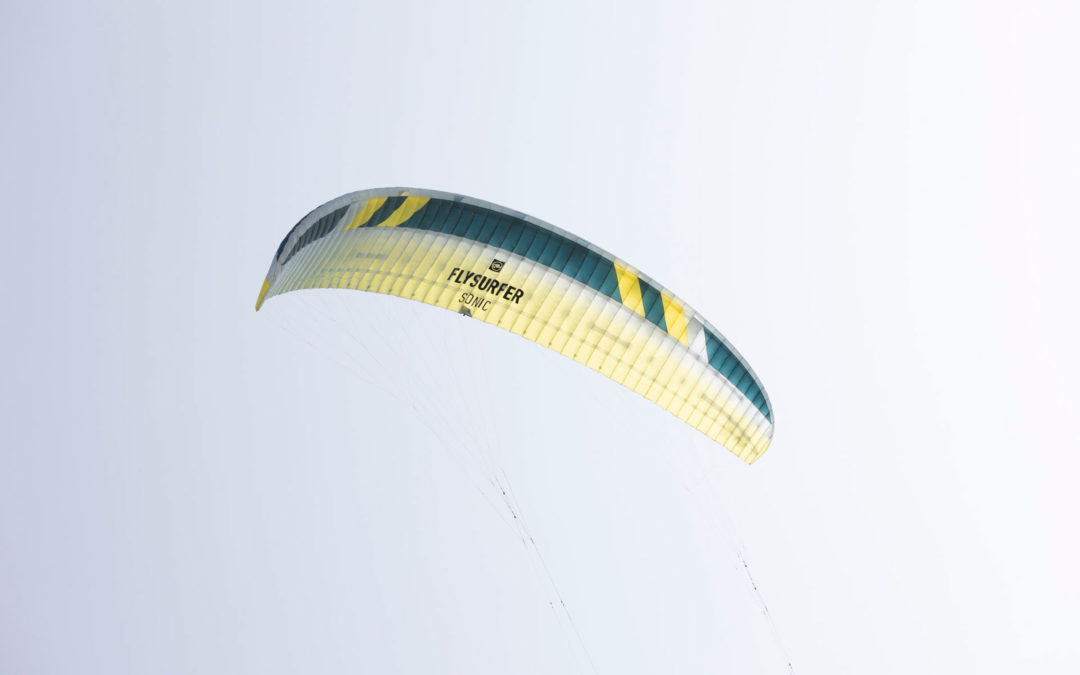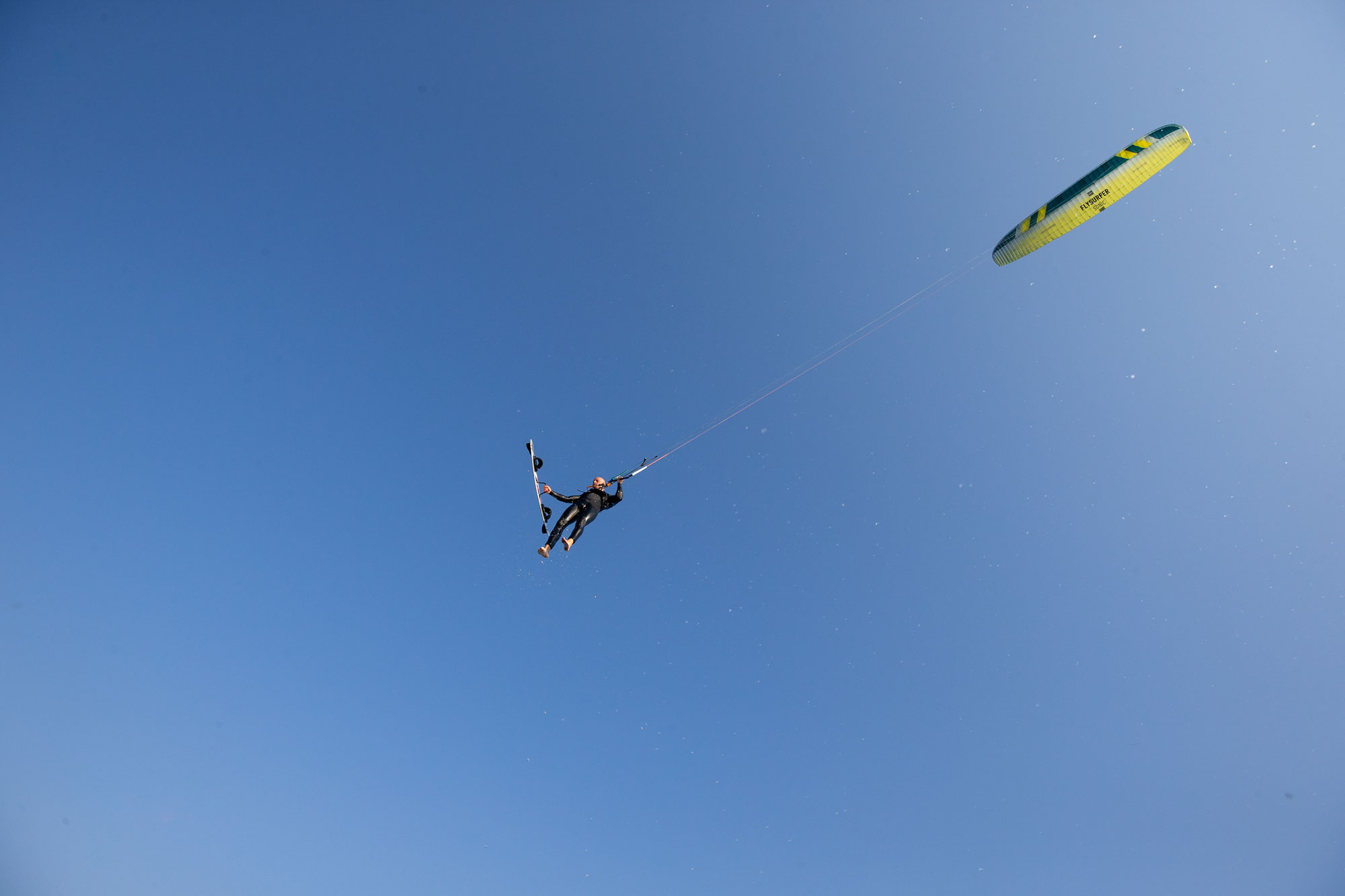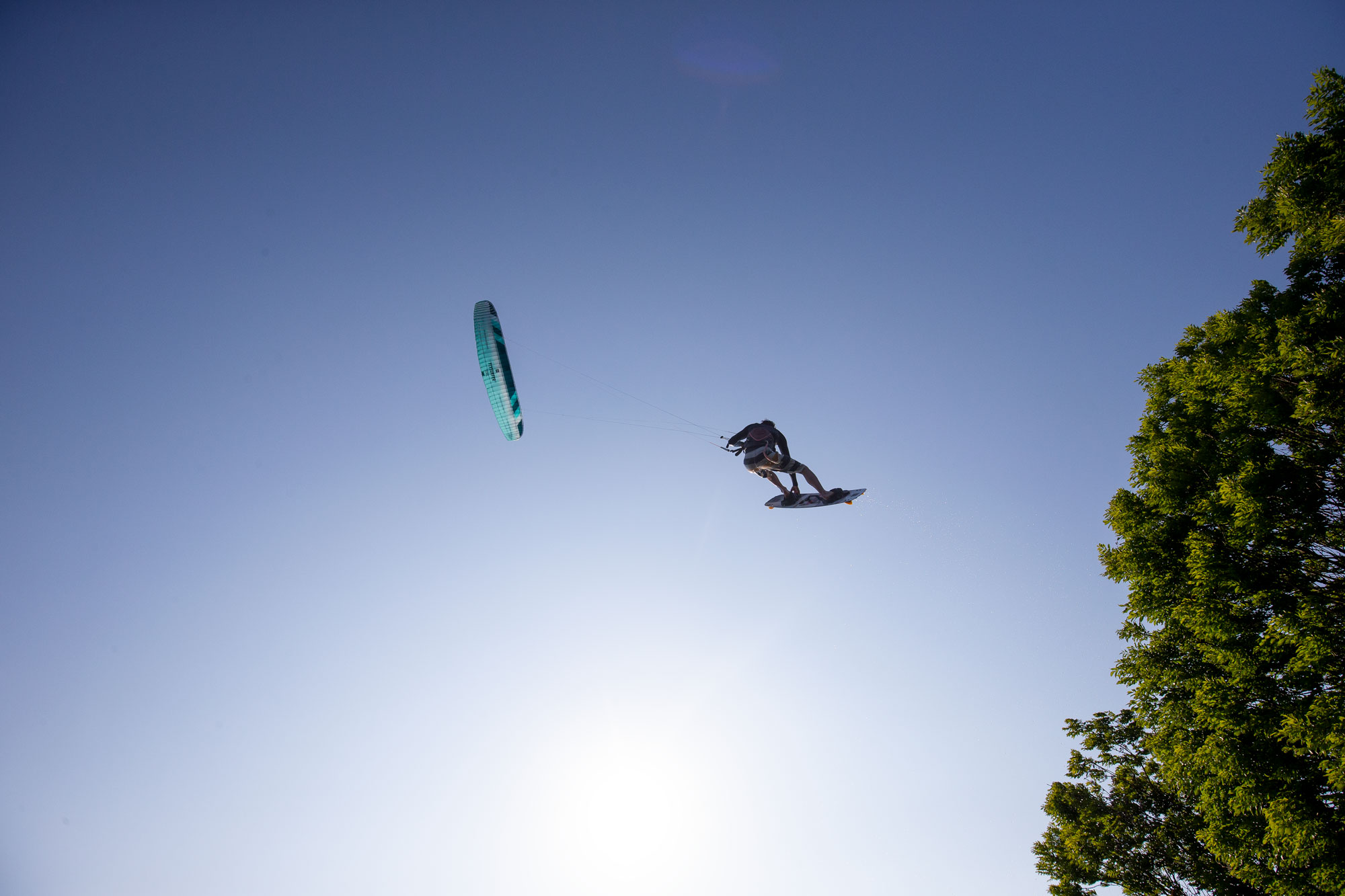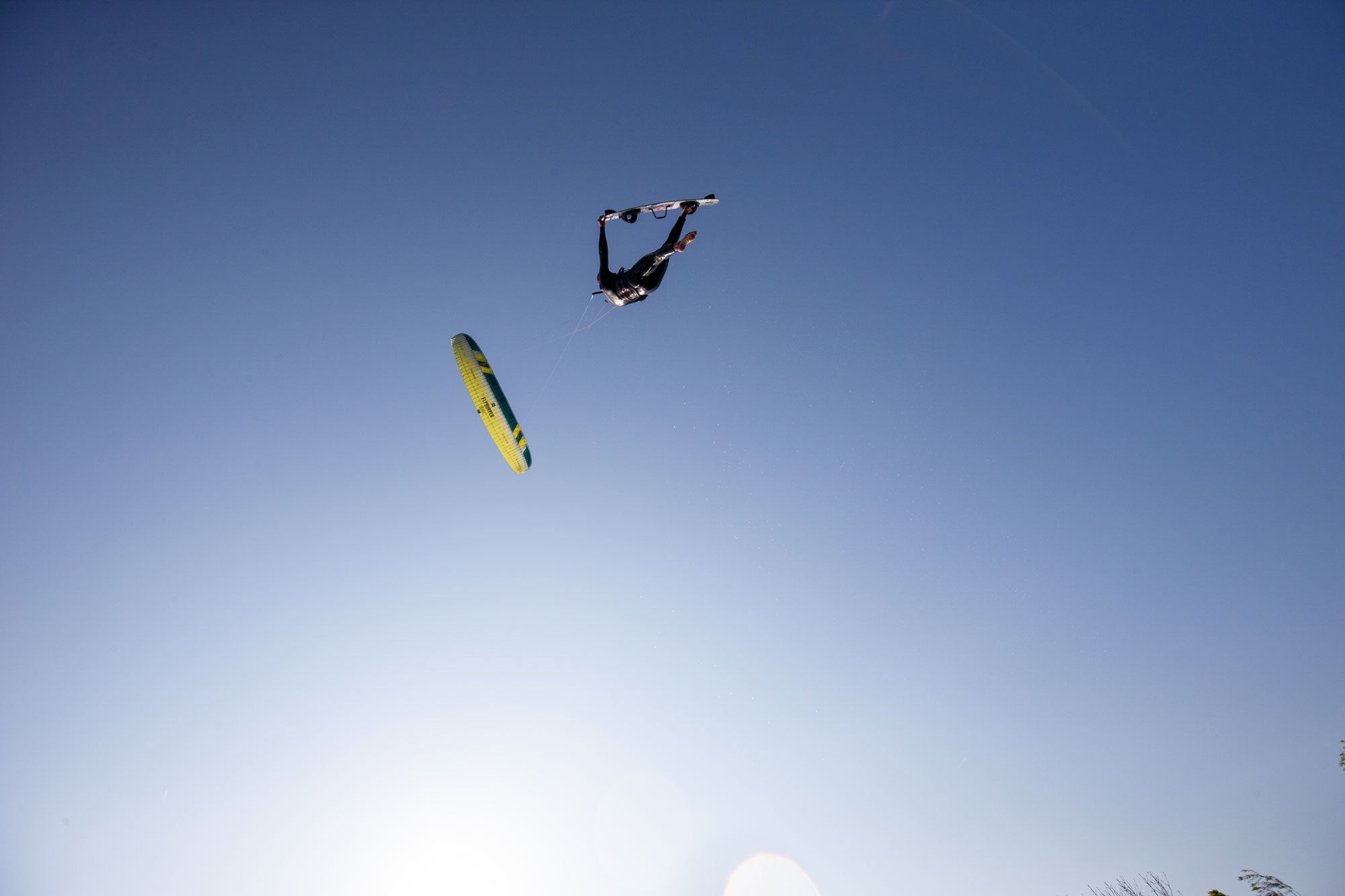Constantly improving our equipment in as many aspects as possible becomes more complicated from version to version. For this reason, responding to our customer’s needs is essential, and incorporating them into our product development. We want to meet the new generation’s expectations while remembering the demands of our weekend warriors. The new SONIC hits exactly this notch, increased user-friendliness with the same performance.
What’s new ?
The SONIC design concept has completely evolved from SONIC3 to SONIC4. The constructions have only a few similarities. The difference in handling and feel is enormous, but both kites offer exciting performance, depower, and hangtime.
Weight optimization: We have reduced the weight without compromising durability by up to 480g, depending on the size. Especially in light wind conditions, the kite is easier to control. Kiteloops or maneuvers with low line tension also benefit from the lightweight construction.
Outline: The change in outline provides more stability to the tips, supports relaunch, and increases performance. These are essential features for improving user-friendliness.
Sail tension: Through continuous production optimization and revision of the work processes, we have been able to reduce the deformation of the kite under high loads while also improving quality. The airflow flows with less disturbance, resulting in improved reactivity.
Adjusted cell count and aspect ratio: The focus on big air has led to a reduction in cells and aspect ratio. This has a positive impact on agility and control. The kite sits slightly deeper in the wind window, which affects easier landings.
Performance Tuner: This feature describes a knot ladder with three adjustment options, integrated into the respective Z-Main line. It changes the kite’s flight characteristics and bar feedback (holding and steering forces). Additionally, the profile curvature changes, influencing depower and how deep the kite sits at the edge of the wind window.
New sizes 6 / 8 / 10 / 12 / 15 / 18: We wanted to provide a better comparison to our legendary SOUL. The finer gradation for the upper wind range is aimed at the younger generation of big air kiters.
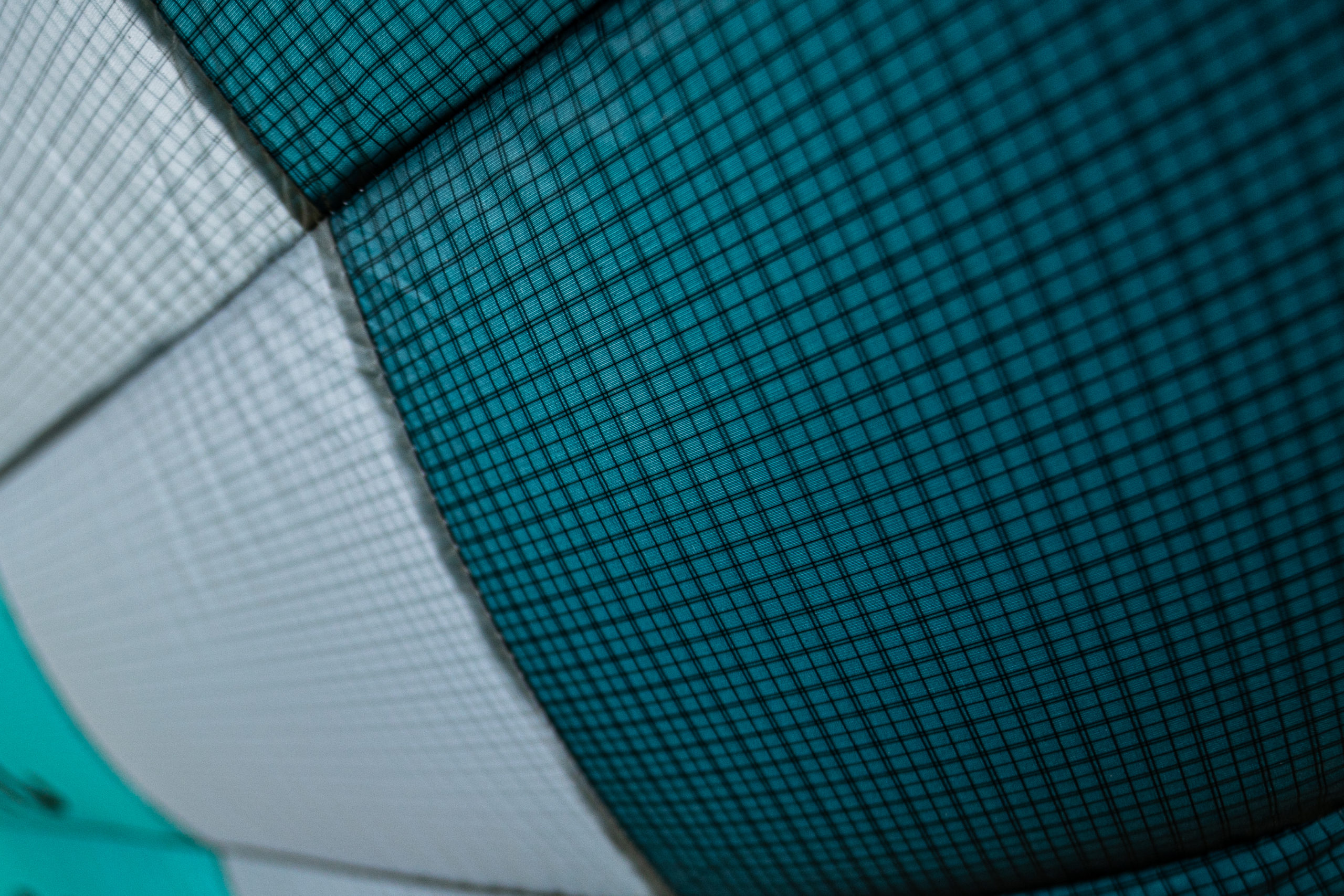
Which fabric is used?
We utilize the proven material mix of the SOUL kite. We use the TX-Light material in the SONIC4 instead of the X-Light fabric used in the SONIC3. The advantages of the TX-Light fabric include increased robustness, durability, and additional ripstop threads. These features result in easier processing and higher accuracy during production, ultimately enhancing the quality of the kite.
Why no size 21?
We do not see the need for two 21m kites and have chosen to maintain the SOUL in that size. Our tests in light wind conditions have shown that the limit of the wind range has already been pushed to its maximum, and the benefits of another 21m kite would be marginal. For those who enjoy riding a 21m kite on a twin-tip board, the SOUL is still available.
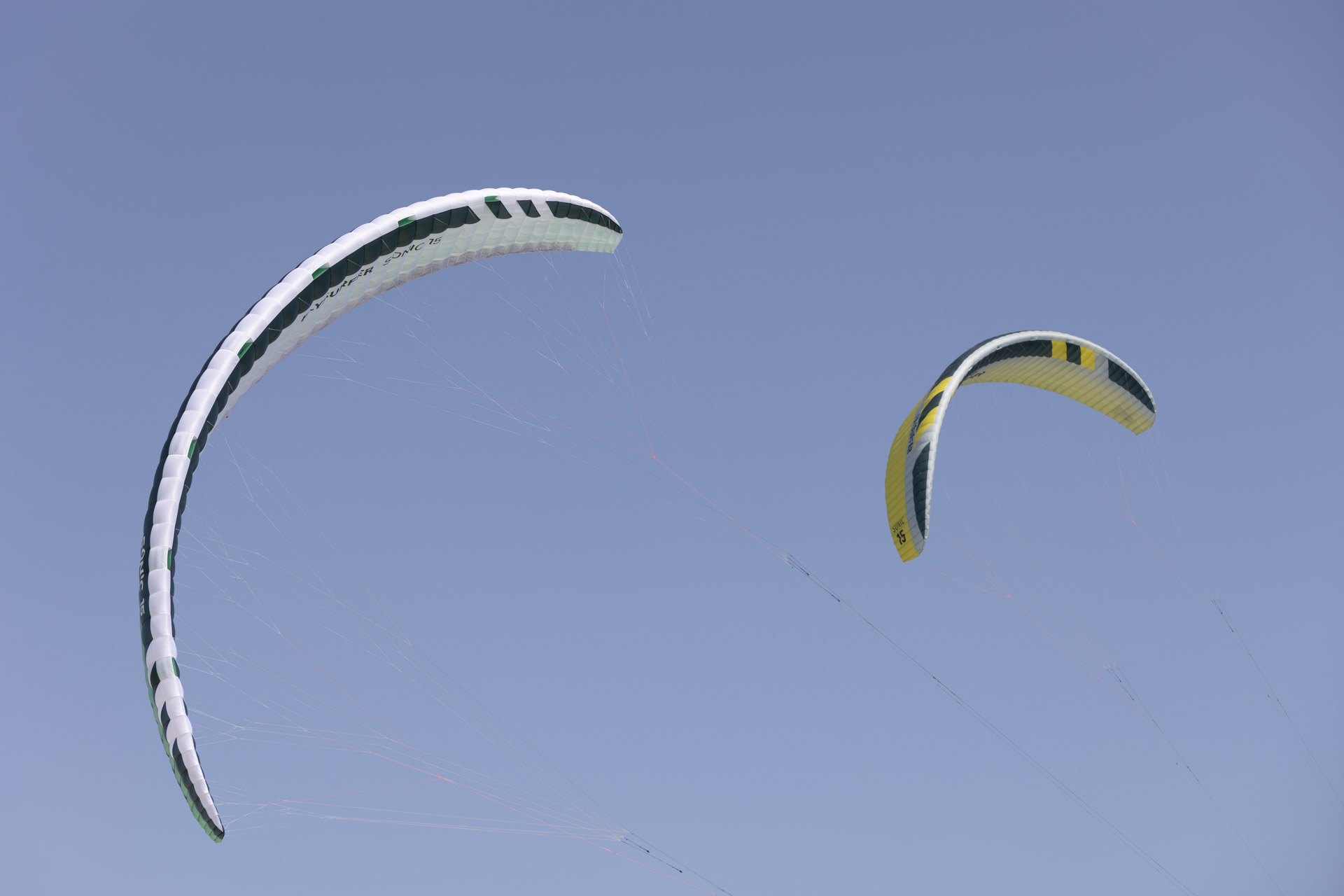
With the SONIC4, we aim to enter the big air scene. Every detail has been refined and optimized to provide exceptional stability and accessible performance. In direct comparison, the kite turns faster and feels stiffer and more responsive. It generates power late, flies quickly through the wind window, and consistently produces controllable power. Spend less time thinking about your kite and focus on what you’re doing. Intuitive handling opens up a world of possibilities.
The SONIC4 is significantly more accessible than the SONIC3. The SONIC3 required skilled hands to fully exploit the kite’s potential. We built it exclusively for foil kite experts who can handle light bar forces and a pivoting high-aspect wing shooting through the wind window. Once you get a feel for it, you’ll quickly become addicted to its playfulness and acceleration. It’s a unique kite that will give you unforgettable experiences!
SONIC4 compared to SONIC3
| Kite size | Cell count | weight (g) | Aspect ratio | Projected Area (m²) |
|---|---|---|---|---|
| 8m vs 9m | -10 | -440 | -0,7 | -0,87 |
| 10m vs 11m | -10 | -460 | -0,4 | -0,87 |
| 12m vs 13m | -10 | -480 | -0,3 | -0,46 |
| 15m vs 15m | 0 | -320 | -0,4 | -0,06 |
| 18m vs 18m | 0 | -380 | -0,4 | -0,08 |
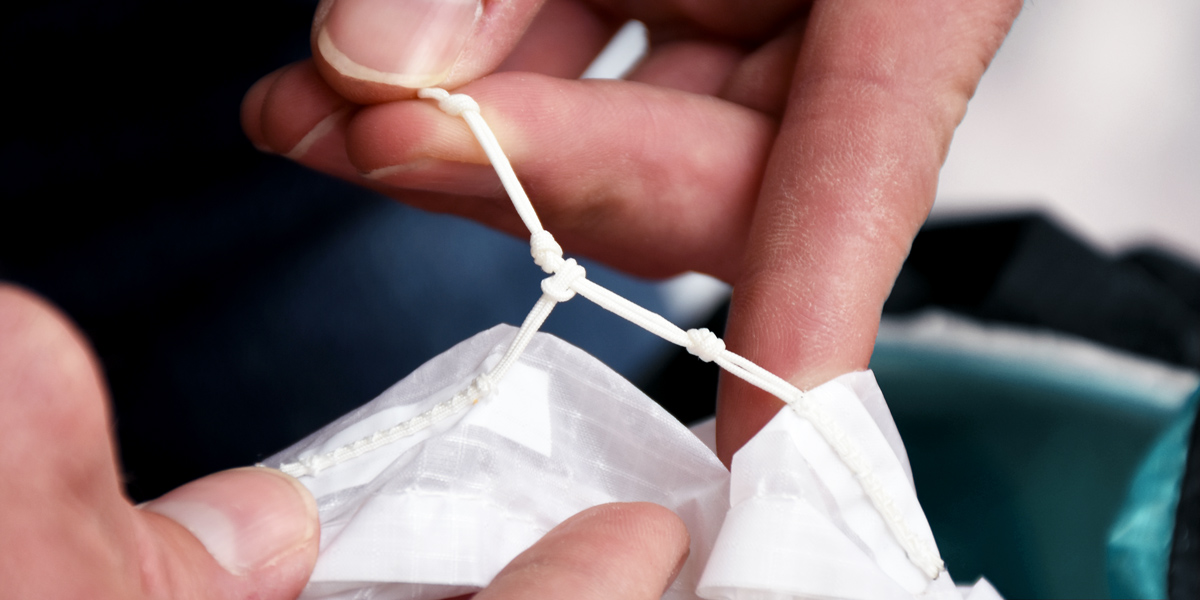
What is the default setting of the Profile Momentum Adjuster?
The default setting of the PMA is focused on stability. Changes to the setting should only be made if you are absolutely confident in your ability to control the kite. The PMAs are used for maintenance or long-term performance adjustments. More information can be found in the user manual.
How can I properly adjust my kite using the Performance Tuner and power/depower settings?
For detailed instructions on this, please refer to the user manual, as it provides comprehensive guidance. It is difficult to provide specific recommendations as individual preferences may vary.
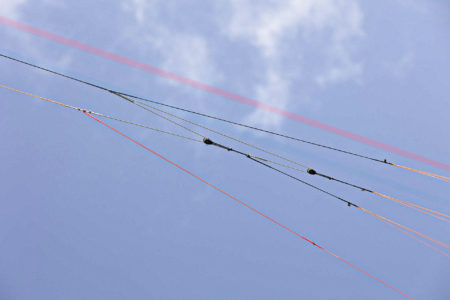
Position 1: Moving the Z-Main Line on the knot ladder towards the kite: Lengthening the line softens control bar forces and reduces backstall. This trim variant allows the kite to fly further toward the edge of the wind window. We recommend it in the upper wind range.
Position 2: By default, the line sits below the center knot. This trim variant offers balanced control bar forces as well as performance and stability.
Position 3: Moving the Z-Main Line at the knot ladder towards the control bar: Shortening the line increases control bar forces and the kite is more cambered. This trim variant allows the brakes to engage earlier and improves the responsiveness of the kite. We recommend them in combination with twin tips or for wave riding.
| SONIC | 6 | 8 | 10 | 12 | 15 | 18 |
|---|---|---|---|---|---|---|
| Color | LIT Orange, Dove | LIT Orange, Dove | Ceramic, Dove | Ceramic, Dove | Mellow Yellow, Dove | Mellow Yellow, Dove |
| Area (projected) | 4,99 | 6,65 | 8,32 | 10,4 | 12,47 | 15,38 |
| Aspect Ratio | 5,8 | 5,9 | 6,4 | 6,6 | 6,7 | 6,8 |
| Cells | 45 | 45 | 45 | 45 | 55 | 55 |
| Weight = canopy + complete bridle + mixer (kg) | 1,22 | 1,5 | 1,78 | 2,08 | 2,5 | 2,98 |
| Bar size | 52 cm [M] | 52 cm [M] | 52 cm [M] | 60 cm [L] | 60 cm [L] | 60 cm [L] |
| Line length | 20 m | 20 m | 20 m | 20 m | 20 m | 20 m |
How much does the SONIC4 benefit from our revolutionary competition kite, the VMG?
The SONIC4 benefits greatly from the insights and unique construction of the VMG. There are clear differentiating factors between the two products in terms of user-friendliness, handling, packability, durability, trim sensitivity, porosity, control, weight, and turning speed. The SONIC4 has advantages in all these aspects.
The VMG is designed to be minimally moved and allows riders to use a kite that is larger than what would typically be suitable for wind conditions. It produces minimal air resistance and sits far out on the wind window, constantly accelerating forward without compromising the rider’s balance. The high demands and extreme performance required of the VMG assist us in every new development or improvement of our kites.
According to our tests, both kites have similar top speeds. The VMG is optimized for racing courses and excels in upwind performance, displaying impressive power.
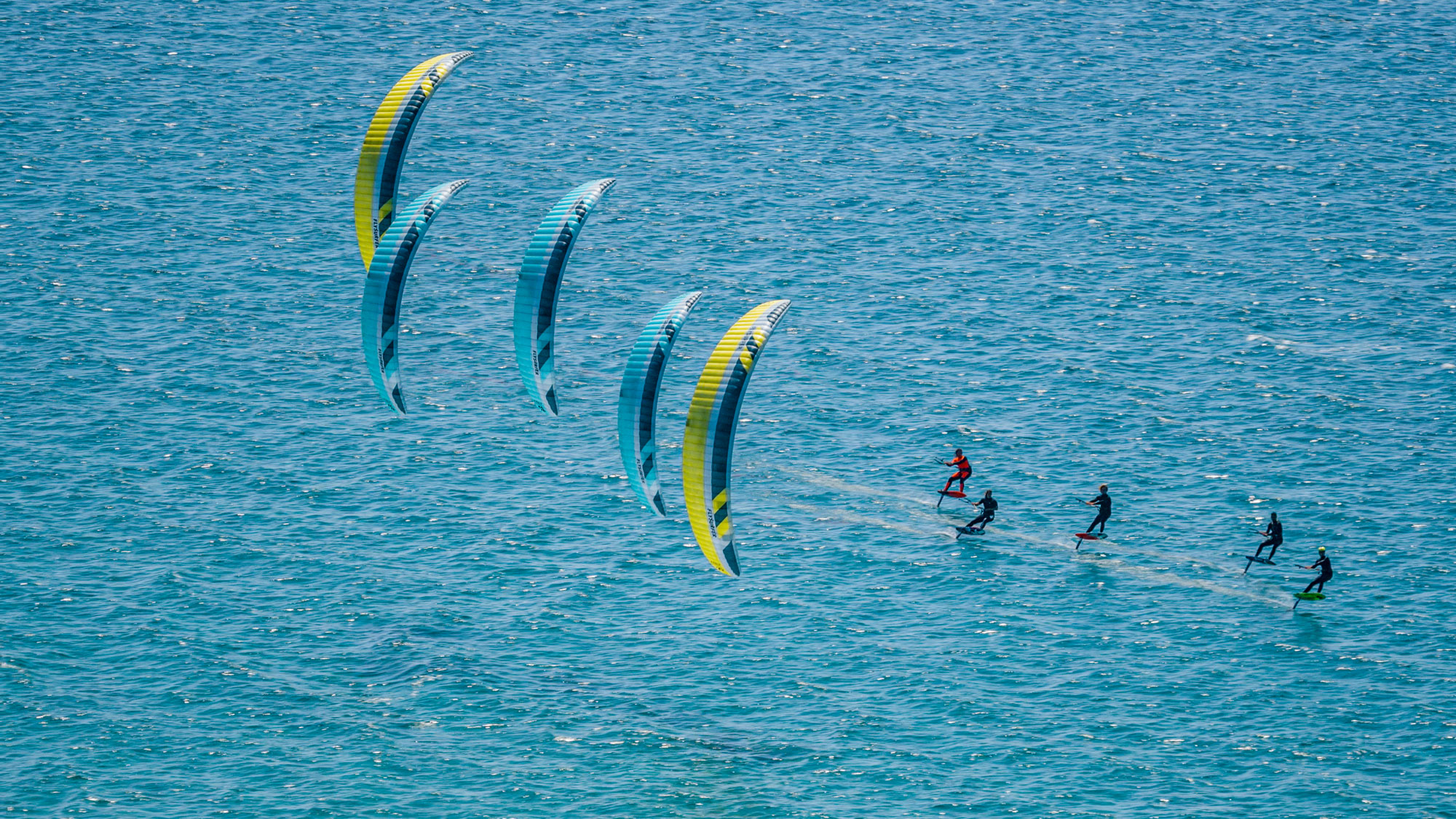
How does the “enormous depower” work from a technical perspective?
By minimizing air resistance, the kite flies very close to the edge of the wind window. There, it is auto-stabilized by the so-called reflex profile, maintaining its shape. This ensures that only a minimal surface area is exposed to the wind at a low angle of attack. The air flows efficiently with minimal disruption over the kite. The kiter himself has to push the control bar away from him on the depower throw to change the angle of attack.
What is the effect of “advanced aerodynamics”?
For years, we have been successfully manufacturing the most efficient kite in the world, which is used in the Olympic Formula Kite class. Our manufacturing techniques, knowledge from top-level sports, and simulations result in a perfect airflow.
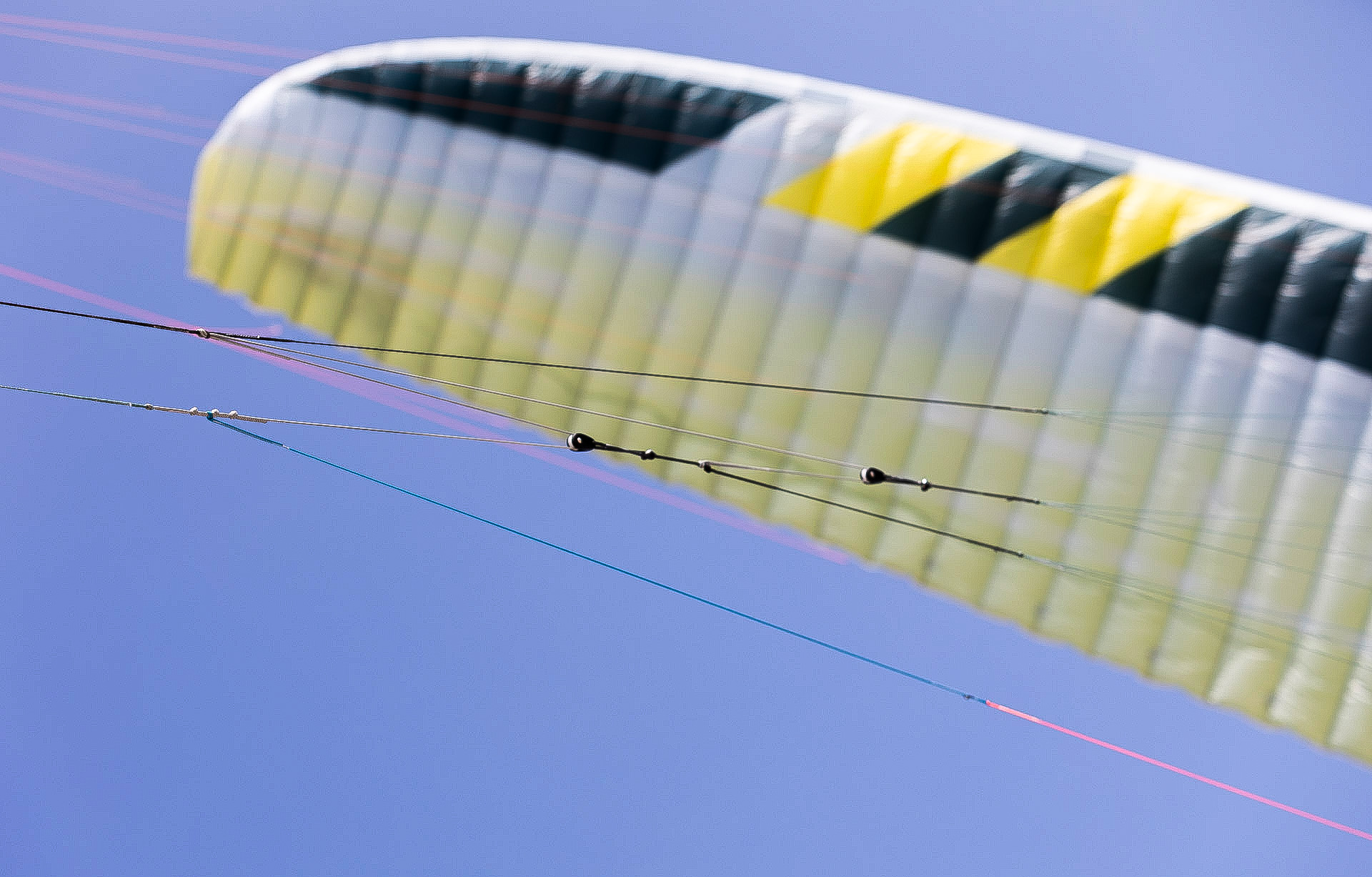
How do I achieve the “wide wind range” and what advantages does it provide me?
If a kite has a wide wind range, it means that it possesses a broad power/depower spectrum. It can generate power even in low wind speeds to get you gliding and remains highly controllable even as the wind picks up. This indicates that the kite is powerful and efficient. Additionally, it provides increased safety in case of unexpected weather conditions. The greatest advantage is that with a SONIC kite, a twin-tip board, and a hydrofoil, you can cover the majority of the wind range.
| SONIC | 6 | 8 | 10 | 12 | 15 | 18 |
|---|---|---|---|---|---|---|
| Wind Range (knots) | 18-45 | 15-38 | 12-33 | 10-26 | 6-21 | 5-19 |
| Sweet spot (knots) | 20-38 | 18-33 | 15-25 | 12-22 | 8-18 | 7-16 |
The SONIC convinces from the first session! The sportiest of our foil kites is a true asset to any kite collection. Don’t miss the next test event and make up your own mind. For more information, please contact a school or the dealer of your trust.

